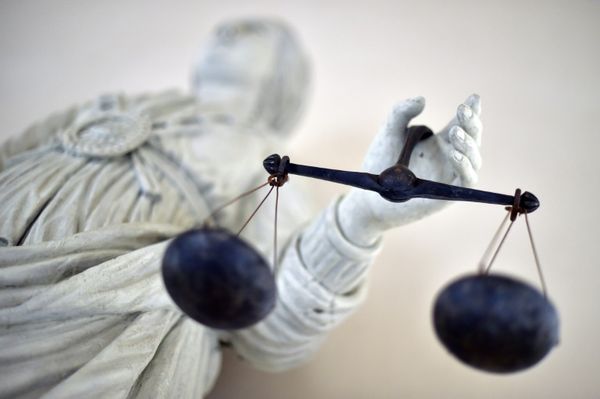The list of elite tight ends in Cardinals history is so short that it doesn’t qualify as a list.
It’s one name: Jackie Smith.
He was the last Cardinals tight end to be selected to a Pro Bowl (1970). He’s the only tight end ranked in the franchise’s top 20 in receiving yards (3rd) and receptions (6th). And he is the only tight end in franchise history who doesn’t have to pay to enter the Pro Football Hall of Fame (Class of 1994).
Since Smith left after the 1977 season, the Cardinals have filled the position with a goulash of players that included solid contributors (Freddie Jones), players who became better elsewhere (Jay Novacek) and disappointing draft picks, free agents and trade acquisitions.
All that has changed with the emergence of Trey McBride over the last two seasons. A second-round pick out of Colorado State in 2022, McBride is more than an up-and-coming talent. He’s arrived, in a big way, and is the team’s best tight end in almost 50 years.
Smith lives in the St. Louis area, and doesn’t watch the Cardinals weekly. But from the games and highlights that he does see, and from talking to friends who are close to the Cardinals, he loves everything about McBride.
“He has all the credentials as far as his size, speed and evidently his attitude, to be a great tight end,” Smith said. “The only thing left is how he thinks about it, and evidently he thinks about it a lot. I would sure love to talk with him, visit with him and work out with him. That would kind of be fun.”
Touchdown views brought to you by @mcbtrey pic.twitter.com/F1XUebnqXe
— Arizona Cardinals (@AZCardinals) November 3, 2024
Smith is 84 and sharp mentally and physically. He works out consistently, he said, in order to keep up his health and to keep up with his grandkids.
His receiving records with the Cardinals have stood for decades, but Smith is looking forward to McBride, who turns 25 later this month, chipping away at those.
“I wish him all the luck in the world getting those tight end (records), whatever they are,” Smith said.
A big chunk fell last season when McBride caught 81 passes, breaking Smith’s record of 56 set in 1967. McBride, however, was well short of the yardage mark for tight ends that Smith set that season (1,205) when he averaged an astounding 21.5 yards per reception.
McBride finished with 825 yards in 2023, averaging 10.7 yards per catch. McBride is on pace for 961 receiving yards this season, so it would take a strong finish to surpass Smith’s 1967 campaign.
But for the first time since the team moved to Arizona, someone has entered Smith’s stratosphere.
“(I want him) to get the (records) so high that nobody will get to them for a long time, or ever get to them,” Smith said. “He seems to be capable of doing that.”
Days after McBride broke Smith’s receptions, Smith recorded and texted a congratulatory video to McBride, telling him he hoped he broke all of his receiving records and that the two should have a beer together sometime.
McBride remains a long way from creating debate about his Hall of Fame credentials. In his first season and half, he played in the shadow of Zach Ertz, and emerged as an elite player only last November, when Ertz, now with Washington, was released. And McBride has yet to produce 1,000 yards over a 17-game season, which Smith once did in only 14 games.
But there is no question McBride is in the upper echelon of NFL tight ends and part of a young group ready for stardom as veterans such as Travis Kelce, George Kittle and Mark Andrews enter their early-to-mid 30s.
Not a Cardinals game without a Trey McBride hurdle 🏃♂️ pic.twitter.com/sibwjvnO6R
— 🌴sSǝNʞu∀ɹℲ🌵 (@frankZONEa) November 3, 2024
Cardinals coach Jonathan Gannon typically doesn’t give long, detailed answers when asked about the skills of one of his players. He’s always complimentary, but if you’re looking for soliloquies, you need to search elsewhere.
He made an exception recently when asked about McBride.
“He’s not a one-trick pony,” Gannon told reporters. “He’s really good in the run game. He’s a three-level guy. He can beat you first level, second level and third level.
“Then in my opinion, where I think he’s really elite is with the ball in his hands. He’s got a knack for knowing when to cover the ball up, when to stiff-arm, when to hurdle guys, when to cut back, when to lower his shoulder and when to split two. He’s a tough tackle and he’s fast. He plays with really good balance and really good control. He is a big guy (6-feet-4-inches, 246 pounds), so he is hard to bring down, (and) pair that with those other athletic traits and he is a big-time weapon.”
Smith had all those traits, too, just in a different era. Like McBride, Smith was an exceptional athlete who went to college (Northwestern State in Louisiana) to run the hurdles on the track team. He opted to play football when coaches told him it guaranteed his scholarship.
Still, he was hardly a phenom. The Cardinals drafted him in the 10th round, and Smith’s original goal was to find a way, any way, to make the team.
He made it as a wide receiver who could move to tight end if an injury required it. That ended up happening.
In the late 1960s in the NFL, Smith was an outlier: an ex-wide receiver who was big enough (6-feet-4-inches, 235 pounds) to block linemen and too fast for linebackers to cover.
Back then, tight ends were truly tight ends. Rarely did they line up anywhere other than inches from the outside foot of a tackle. Defenses were not forced to alter coverages because linebackers could cover most tight ends. Not Smith.
“A lot of them (tight ends) were tackles that were made into tight ends,” Smith said. “You get in the middle of the field and you have a great advantage. The linebackers would try to hold you and punish you. They wouldn’t let you off the line of scrimmage.”
But if a tight end could get a clean release, as Smith obviously often did, he became a dangerous threat.
“A lot of the times, the safety wasn’t used to seeing a tight end,” Smith said. “It was ‘what the hell are you doing down here?’ They didn’t have any coverages set up if the tight end came downfield.”
Happy birthday Jackie Smith!
The Hall of Famer retired as the all-time leading receiver at tight end with 480 receptions, 7819 yards and 40 TDs.
Smith's best season came in 1967 when he went for 56-1205-9 averaging 21.5 ypc at the TE position.
Still a St. Louis treasure! pic.twitter.com/E6TyuCe7wd
— St. Louis Football Cardinals (@BigRed_STL) February 23, 2024
Smith credited those around him for success. Jim Hart was one of the best quarterbacks in the NFL at the time. The Cardinals offensive line in the early 1970s was among the best, too. And Don Coryell, the head coach from 1973-77, was one of the game’s great innovators.
“You can’t do anything with the football unless the quarterback throws it to you,” Smith said.
Smith is among those who are curious how the Cardinals will use McBride over the coming years. Will he continue to have a quarterback like Kyler Murray who looks his way often? An offensive coordinator like the Cardinals’ Drew Petzing, who loves formations for multiple tight ends?
“The only thing left is if they will build some stuff around him and if the quarterback will throw it to him,” Smith said.
Well, maybe one other thing, Smith said. How committed will McBride be to his craft?
Smith isn’t close enough to the Cardinals these days to know that for sure, but he likes what he hears, and sees, regarding McBride.
Distance and frayed relationships have kept Smith from keeping better tabs on the Cardinals over the years. The Cardinals left St. Louis for Arizona in 1988, and Smith has strong ties with the St. Louis area.
Smith is the only Cardinals Hall of Famer not in the ring of honor, likely a result of a rocky relationship with former owner Bill Bidwill. But Smith’s interest in the Cardinals is piqued these days, partly because of McBride’s talents.
Last Sunday, Smith made his way to a restaurant that carried NFL games and watched McBride score on a run in the Cardinals victory over the Bears.
“It was refreshing to see those red uniforms,” he said. “I had a great time.”







